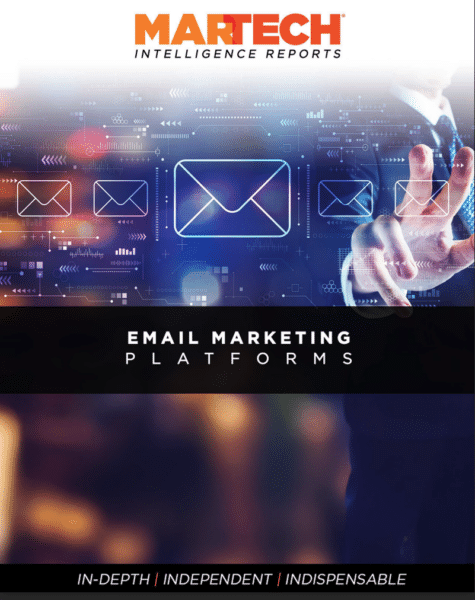
Despite the widespread adoption of social media and the rise in SMS and RCS messaging, email remains a vitally important channel for reaching customers and prospects.
Research by SAP Emarsys and Deloitte found email was the preferred channel for consumers to interact with brands (chosen by 40% of respondents), well ahead of brand websites (28%), mobile apps (24%) and SMS (21%).
However, the ever-increasing number of channels and the sheer number of emails many consumers receive present a significant challenge for email marketers.
Challenges facing email marketers
Simply standing out in overflowing inboxes is a monumental challenge for email marketers. Those inboxes are increasingly partitioned into categories like Promotions and Updates by email software. The goal used to be staying out of the Junk folder. Now it’s making the Primary inbox.
Another challenge is achieving effective personalization and segmentation, which, if overcome, will help marketers cut through the noise.
Personalization and segmentation allow marketers to move beyond one-size-fits-all blasts and leverage data to tailor content to specific audiences or behaviors. However, one significant barrier to making this happen is the privacy-conscious environment where marketers operate, so a balance needs to be achieved.
The use of data in everything they do — including email — puts marketers under a challenge we’ll call “data pressures.” These include navigating efforts by governments and tech companies to safeguard customer privacy, which are making it harder to gather data about individual users. Other data pressures include the pending demise of third-party cookies and reductions in the utility of mobile ad identifiers. Apple’s Mail Privacy Protection (MPP), which conceals opens and IP addresses, is one specific example.
Another data-related challenge facing email marketers is adapting metrics and analytics strategies in response to changes like MPP, requiring them to find new ways to measure campaign success beyond open rates.
Dig deeper: Download our MarTech Intelligence Report on email marketing platforms to compare tools and vendors
Is your email marketing platform up to the task?
Email marketing platforms are evolving in significant ways to meet the increasingly complex needs of today’s marketers.
They now offer sophisticated tools for audience segmentation based on various data points and behaviors. Features like dynamic content insertion and lifecycle-based messaging are becoming standard. Platforms also incorporate AI and ML to provide insights and suggestions for list segmentation and personalization.
AI integration and automation represent another significant leap forward. Generative AI is now integrated into workflows for content creation, suggesting subject lines, body text, calls-to-action and visuals. AI is also used to automate A/B testing, perform sentiment analysis and enhance deliverability.
Automation tools, including the ability to create sophisticated workflows and triggered messaging based on recipient behavior, are now a staple of email platforms. More sophisticated providers leverage AI and ML to optimize automation and anticipate user needs.
The shift toward omnichannel marketing has also influenced the evolution of email platforms. Today’s platforms often include or integrate with multiple messaging channels, such as SMS and web push capabilities, and offer easy integration with social media and ad platforms. Many email service providers now provide native SMS features, enabling combined email and SMS campaigns for more effective customer communication.
In response to data pressures and increased emphasis on data-driven personalization, email marketing platforms are augmenting the data available within their platforms and emphasizing metrics beyond open rates. Some platforms incorporate more full-featured Customer Data Platform (CDP) functionality to unify data from online and offline touchpoints and third-party sources. They also provide tools for managing list hygiene and complying with data privacy regulations.
The latest generation of email technology features improved message design and creation tools. Providers offer libraries of templates with drag-and-drop interfaces and code-centric options. Features supporting interactive emails using AMP for email or CSS are becoming more accessible. Integration with specialized design tools is also standard.
Deliverability management is becoming increasingly sophisticated. Platforms offer features to predict spam triggers, manage send times and implement authentication protocols like DKIM, SPF and DMARC. Some vendors have dedicated teams to build relationships with inbox providers and address deliverability issues.
Analytics and reporting capabilities are also advancing. Platforms now offer detailed reporting on delivery rates, click-through rates, bounces and unsubscribes, and many allow connecting to purchase data to measure ROI. With the decline of open rates as a reliable metric, vendors are developing algorithms and new metrics to guide marketers.
Finally, many platforms now offer collaboration features, including user permissions, roles, approval processes, and the ability to share assets and templates, to facilitate team collaboration and efficient workflows.
The email marketing platform market is a mix of mature vendors and emerging upstarts.
Overall, email marketing platforms have evolved from basic email-sending tools to sophisticated, AI-powered, omnichannel customer engagement platforms that address today’s marketers’ complex data, personalization and automation needs.
Download the MarTech Intelligence Report on email marketing platforms.
This free download (registration required) includes profiles of 14 vendors in the space and a comprehensive view of the market.
The post Is your email platform built for today’s email challenges? appeared first on MarTech.

